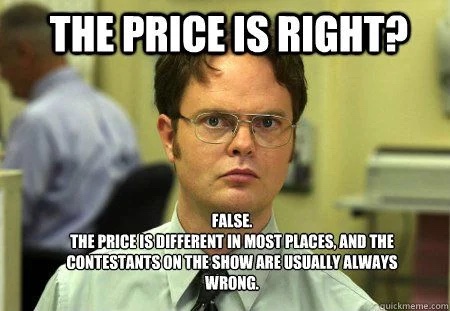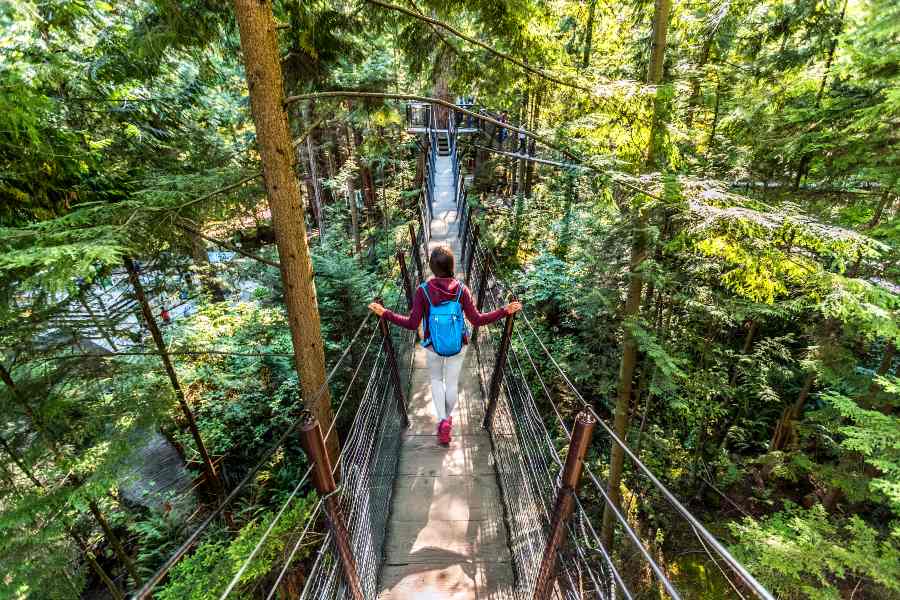Remember that game show where the contestants had to guess how much something cost? Yes, of course, it’s The Price is Right!
As a tour and activity operator, your life could be as entertaining as a game show, especially when it comes to costing and pricing. And as you probably know, your prices have to cover your costs, all of them.
Learning how to price a tour is no small feat. Sure, being fully booked is wonderful, but your goal is to be profitable. And if you can create a sustainable pricing structure early on, you’ll be resilient in the long run.
In this article, you’ll learn what goes into costing and pricing in the tourism industry and how to re-evaluate pricing at the end of each busy season.
What goes into tour costing and pricing
Pricing affects how guests feel about the experience they’re buying. If a tour or activity is priced too low, it may seem cheap. But if you want to increase your market share, a low price might help you achieve that goal. Conversely, if an experience is priced too high, it may be unaffordable for your target market. However, if you want to be seen as a premium operator, you might consider higher prices.
In addition to your customers’ willingness to pay, your pricing should also take into account your operating costs and profitability. So be aware of the nuances and take the time to develop a pricing strategy that’s in line with the strategic goals of your tour business.

How to price a tour package
You wouldn’t be the only one who’s made the mistake of assessing the competition in your tour business and pricing just below or just above it to attract bookings. While it’s understandable to want to increase your market share, don’t just base your rates on a reference price, but combine it with insights from your unique tour business.
When pricing a tour, consider the following questions
- What type of activity or tour are you selling?
- How many people can you accommodate?
- How many tours do you conduct per day?
- What are your operating costs?
- How many of your costs are fixed vs. variable?
- Are you a seasonal business that experiences high demand at certain times of the year?
As a rule of thumb, remember that most customers see themselves somewhere in the middle when it comes to pricing. This means that if guests are presented with 3-4 options, they’ll gravitate toward the mid-range tour option.

The cost-plus pricing method
One method of tour costing and pricing is the cost-plus pricing strategy, where you enter all your expenses and expected revenues. Once you know your baseline expenses, you can use this information to determine a profit margin. Here are some expenses to consider when determining the cost of running a tour business:
Example fixed costs for your tour business
- Administrative costs (2-5%)
- Business Insurance (10-20%)
- Employee wages (20-25%)
- Equipment depreciation (10-30%)
- Leasing and/or rental costs (20-30%)
- Phone and Internet bills (2-5%)
- Utilities (5-10%)
Sample variable costs
- Accommodations
- Meals
- Transportation
- Gas and maintenance costs (5-10%)
- Hourly guide wages (depends)
- OTA commissions (10-30% of the booking price)

Price factors to consider
Tour type
Maybe you’re in the food or walking tour business, where all your guests have to do is show up and be entertained. On the other hand, you may be a kayak guide or provide guests with bike rentals. Consider whether you have additional costs based on the type of tour you offer. Looking at your local competitors, similar businesses and OTA’s will help you get a sense of the market conditions.
Remember, guests want you to tell them why a tour is worth the price you’ve set. Be sure to include duration, add-ons, and whether transportation is included in the total cost of the experience. Ultimately, you want your brilliant tour description to support the price and make it easy for guests to say, “That sounds like it’s worth it.
You might also consider offering your tours as a package. Tour packages typically follow a structure with a set amount of time for each activity. Some tour companies offer lower prices to get prospects in the door, so even if an individual booking is not profitable, this strategy can generate enough volume to make it worthwhile.
Demand
If you’re already in your busy season, you may be stretched to the limit of what you can do without additional staff. If you run several tours a day, do you need to keep staff on hand to run additional tours? For example, is there a busy season or peak booking times when you have a waiting list for guests?
Duration
Do you take guests on 1-2 hour tours or multi-day expeditions? The length and frequency of your tours will depend on the amount of staff you have available, and longer tours have the potential to increase profits once all fixed and variable costs are accounted for. Of course, multi-day tours have higher fixed costs and increased logistics for booking.

Upselling
When creating travel packages, think about what your guests want and whether they’ll pay more if you make their travel plans even easier. You may be able to increase your tour price by adding a meal or transportation option as part of certain tours.
As you look to create value-added trips, you’ll see more guests sharing and raving about you on review sites. One way to look at this is to view every booking as an opportunity to give guests more value than they’ve paid for, especially if the activity is a once-in-a-lifetime opportunity.
Seasonality
Do you find yourself with an insane summer season or is the wintertime busy with bookings? Depending on your tour business model, certain expenses, such as staff wages, can significantly increase your costs from one season to the next.
As part of your seasonal marketing strategy, you’ll find a different approach might work better. One option might be to offer early bird pricing deals in the winter ahead of the spring season. Another might be to implement a dynamic pricing strategy to encourage bookings on specific days.
Seasonality may mean dramatic fluctuations in your pricing, with the tipping point being 20-30% lower than what you could charge for the same experience in your busy months. At the end of every season, aim to dedicate one day to reviewing reports from the last 3-6 month’s worth of bookings. This will let you see if you’re turning a profit if your costs are creeping up, and whether you have to undertake pricing adjustments.

Why profit isn’t a dirty word
Building profit into your tour costing and pricing means creating a contingency plan for slower booking periods.
Let’s say you have funds flowing out of the business for overhead or wages for your guides, you need to be able to cover the cost of doing business with your tour prices. Cash flow is essential when you’re building and scaling a tour business. That’s why it’s in your best interest to build in a profit from the start.
Profit margins can range from 10-40% of your posted tour price, depending on your specific business model and the season. By setting a margin, your time is always compensated and you don’t burn out by doing tours that don’t pay for themselves. The added benefit of running a profitable business is that it gives you the power to determine when and how fast you scale.
Remember, you’re in the business of creating memorable experiences for your guests. If you’re committed to being in it for the long haul, your tour costing and pricing need to reflect your hard work. By strategically pricing your tours, rentals, and activities, you’re setting up your business for long-term sustainability.

What goes into pricing private tours
Given how the pandemic impacted group tours in many parts of the world, private tours have grown in popularity. 47% of travelers from the States chose a private tour over a public one in 2024. Your capacity for multiple tours will be limited if you focus on private tours, which explains why prices for these types of tours are typically higher: guests are willing to pay more for the convenience of having a guide all to themselves. In return, you can run tours with fewer people and still be profitable.
Let’s say you have a couple that prefers to explore at their own pace. Perhaps they find group tours exhausting, or they would rather have the flexibility to discover hidden gems at a different pace or time. If you specialize in private tours, you need to consider that you can’t charge more for each individual person who might join a group tour.
Therefore, you must charge more for your time. Is it more expensive for the two people who book a private tour? Yes – most likely. In addition, by focusing on private tours, you may be able to reduce your variable costs by reducing staff salaries, but you still need to consider your fixed costs.
An added benefit of private tours is that it eliminates concerns about not meeting minimum guest requirements. This means you can run tours with fewer people and still be profitable. Fortunately, the benefits are there for both guests and tour operators. For guests considering whether to book a private tour, the expectation is that they’ll pay more in exchange for a higher quality experience.
Additional considerations
Every tour company has to consider fixed and variable costs that can fluctuate between seasons. With inflation and operating costs rising every year, it’s worth reviewing pricing on an annual or even seasonal basis.
Savvy operators allocate a marketing budget (think of it as money you can spend targeting your ideal guests and having fun doing it). Explore marketing distribution by leveraging different channels, such as online travel agencies (OTAs), to increase bookings when it makes sense for your business.
As distribution channels that can get you more bookings, OTAs typically take a commission of 15-30% of your booking fee. As a result, setting aside a portion of your revenue to promote your business can increase direct bookings, leaving more in your pocket.

Final thoughts
It is worth reviewing tour pricing before and after each peak season. During your slower periods, you can analyze data from previous bookings. With this insight, you can create even better and more profitable packages in the future.
Always look at what gets guests in the door. Is it your superior service? Is it your consistency and dependability? Are you a master at personalizing private tours, or is your dynamic pricing strategy on point?
People are much more likely to buy from companies they know and trust. Feel free to look at upselling opportunities to increase revenue and add value for your guests.
Look ahead and set some goals for where you want to be. Continue to lean into your pricing strategy, so you have solid momentum to build and scale your business to meet the pent-up demand for remarkable travel experiences.
Want to take Checkfront for a spin?

Take your business to the next level
Online bookings. Flexible pricing. Outstanding support.



